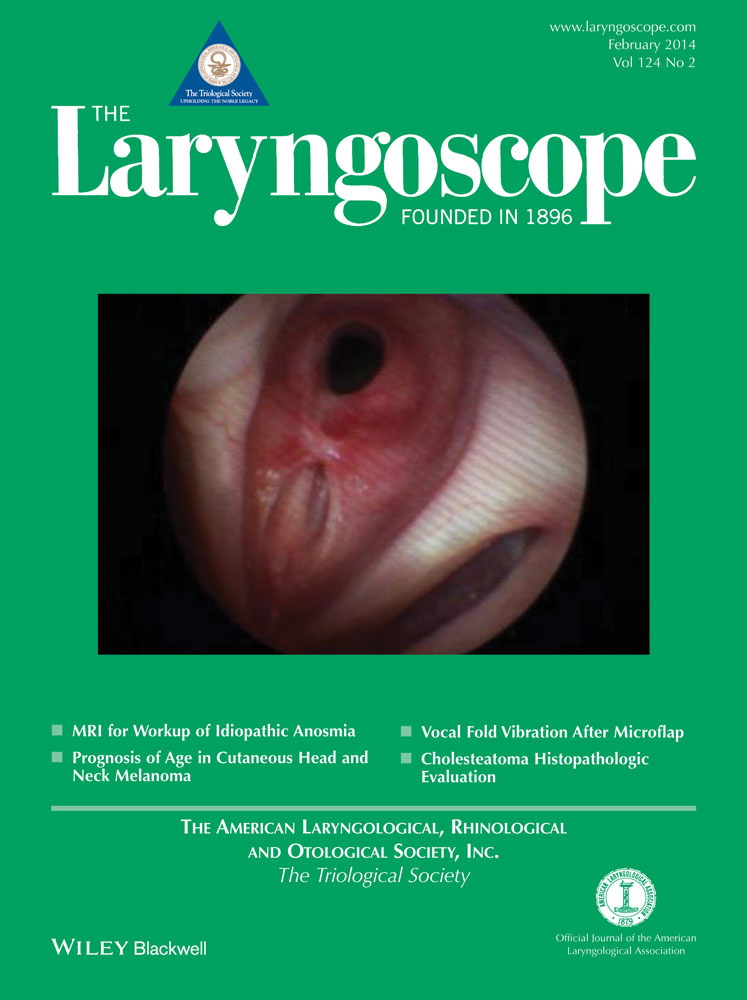Voice outcomes following reconstruction of laryngopharyngectomy defects using the radial forearm free flap and the anterolateral thigh free flap
Presented at the Combined Otolaryngology Spring Meetings, San Diego, California, U.S.A., April 18–22, 2012.
The authors have no funding, financial relationships, or conflicts of interest to disclose.
Abstract
Objectives/Hypothesis
Patients undergoing laryngopharyngectomy with extensive pharyngeal mucosal resection or those failing chemoradiation protocols are commonly reconstructed using free tissue transfer. Radial forearm free flaps (RFFFs) and anterolateral thigh free flaps (ALTs) are two of the most commonly used free flaps for laryngopharyngectomy reconstruction. It has been suggested that alaryngeal tracheoesophageal prosthesis (TEP) speech outcomes in patients undergoing ALT reconstruction may be inferior due to the possibly bulkier neopharynx. We report the results of patients treated with ALT and RFFF with regard to postoperative TEP voice outcomes.
Study Design
Retrospective cohort study.
Methods
We identified 42 consecutive patients who were treated with total laryngopharyngectomy and free flap reconstruction utilizing either RFFFs (20 patients) or ALTs (22 patients) between April 2001 and August 2010. Evaluations with statistical analysis of standard TEP speech outcome measures (maximal sustained phonation, fluent count, syllable count) and qualitative variables were conducted.
Results
Patient demographics were similar between the RFFF and ALT groups, and 95% and 91% of RFFF and ALT patients received radiation therapy, respectively. Subjective voice quality did not significantly differ between the groups. Differences in outcomes of intelligibility, maximal sustained phonation time, maximum number of syllables, and fluent count, as evaluated by a single speech pathologist, were not statistically significant between RFFF and ALT patients. There was no difference in postoperative complications.
Conclusions
These data indicate that reconstruction of laryngopharyngectomy defects using either the ALT or RFFF technique can produce similarly acceptable TEP voice results.
Level of Evidence: 2b. Laryngoscope, 124:397–400, 2014




